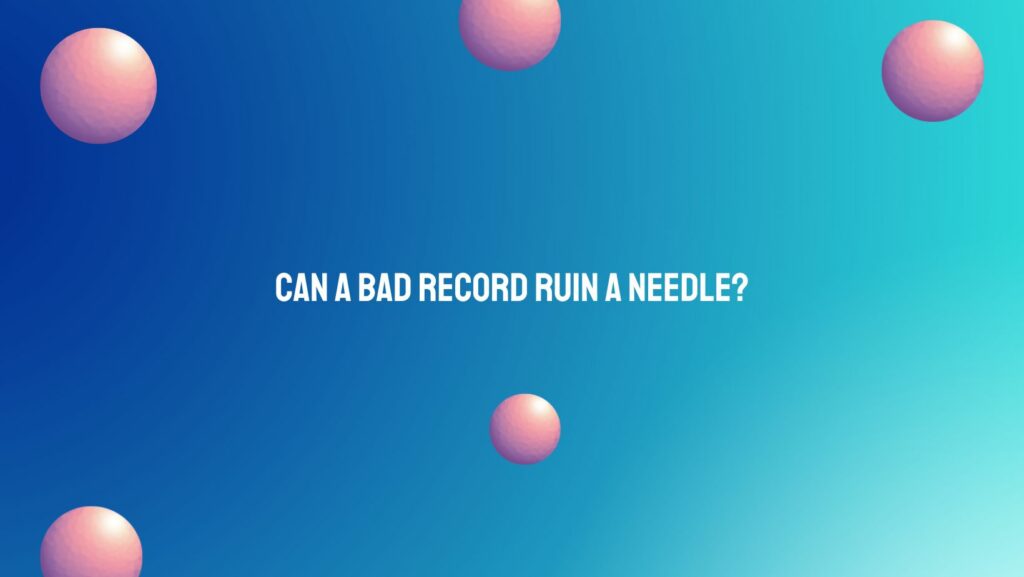In the world of vinyl enthusiasts, the delicate dance between a record and its needle is a crucial element of the analog listening experience. However, the question often arises: Can a bad record be the culprit behind a needle’s demise? In this article, we navigate the intricacies of this relationship, examining how the quality of a record can impact the health and longevity of a turntable’s needle.
Understanding the Anatomy of a Needle:
The needle, or stylus, is the unsung hero of vinyl playback, translating the intricate grooves of a record into the sweet sounds that captivate music enthusiasts. Comprising a fine tip attached to a cantilever, the needle’s condition is critical for optimal performance.
How a Bad Record Can Impact a Needle:
- Surface Imperfections:
- A bad record with surface imperfections such as scratches, warps, or deep gouges poses a significant threat to the stylus. The needle can encounter resistance or get caught in these imperfections, leading to wear and potential damage.
- Contaminants and Debris:
- Poorly maintained or dirty records can harbor dust, debris, and contaminants. As the needle traverses the grooves, it may pick up these particles, causing premature wear and affecting the overall performance.
- Excessive Lateral Movement:
- Records with excessive lateral movement or eccentricities can force the stylus to move erratically. This can lead to uneven wear and increased stress on the needle, potentially causing long-term damage.
- Inadequate Vinyl Composition:
- Records manufactured with inferior materials or poor vinyl composition may exhibit irregularities that contribute to needle wear. These imperfections can hasten the degradation of the stylus over time.
Impact on Needle Health:
- Increased Wear and Tear:
- A bad record can accelerate the wear and tear on the stylus. Surface imperfections create friction, leading to premature degradation of the needle tip.
- Reduced Lifespan:
- Continuous exposure to poorly maintained or damaged records can significantly reduce the lifespan of a needle. The needle may wear out faster, necessitating more frequent replacements.
- Tracking Errors:
- As the needle encounters imperfections on a bad record, it may struggle to track the grooves accurately. This can result in tracking errors, audible distortions, and a compromised listening experience.
Preserving Needle Health:
- Proper Record Care:
- Ensure records are clean, free from dust, and stored in a cool, dry place. Regularly clean records with a gentle brush to minimize the risk of contaminants affecting the stylus.
- Quality Vinyl:
- Invest in well-manufactured records with high-quality vinyl composition. Quality pressings reduce the likelihood of imperfections that can harm the needle.
- Regular Needle Inspection:
- Periodically inspect the stylus for wear and damage. If signs of degradation are visible, consider replacing the needle promptly to prevent further issues.
Conclusion:
While a bad record can pose challenges to needle health, proactive measures in record care and stylus maintenance can mitigate potential damage. Understanding the delicate interplay between records and needles empowers vinyl enthusiasts to preserve the longevity of their turntable components and continue savoring the timeless allure of analog music playback.


